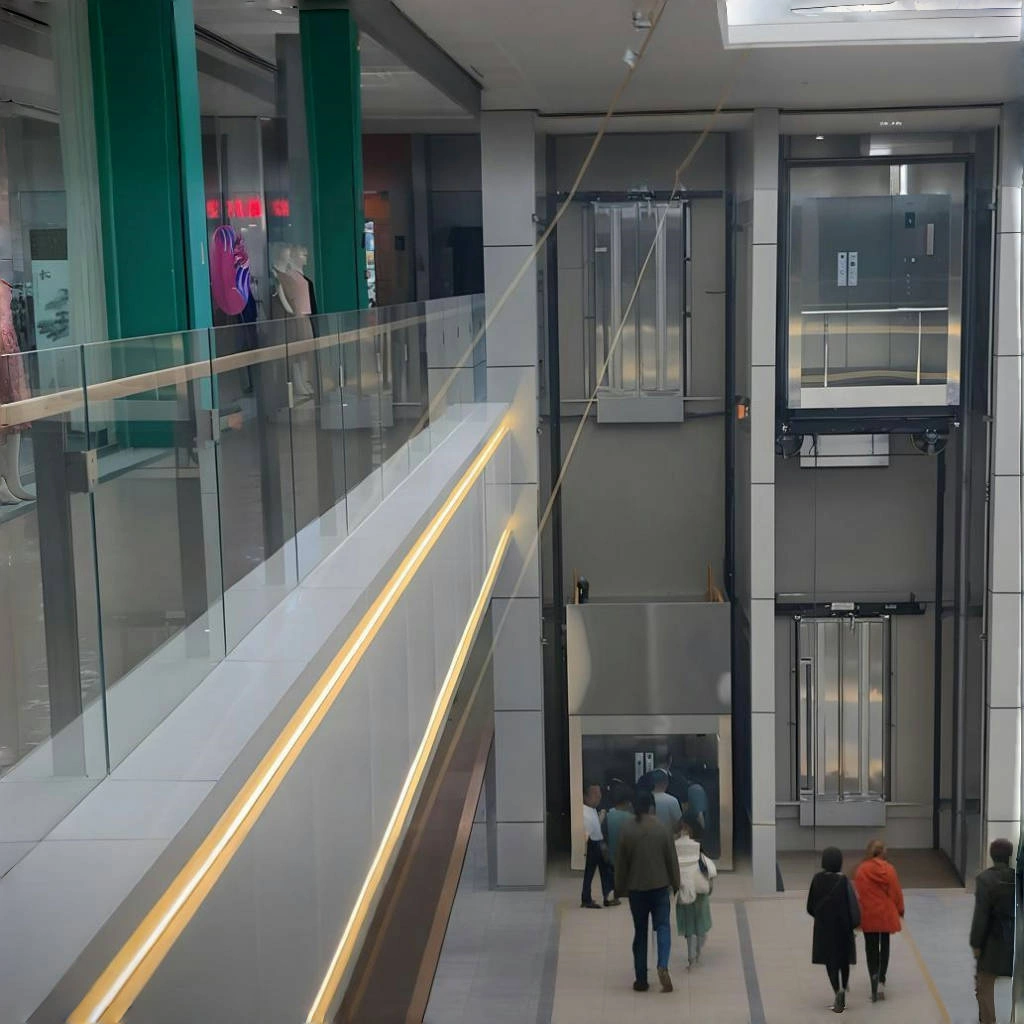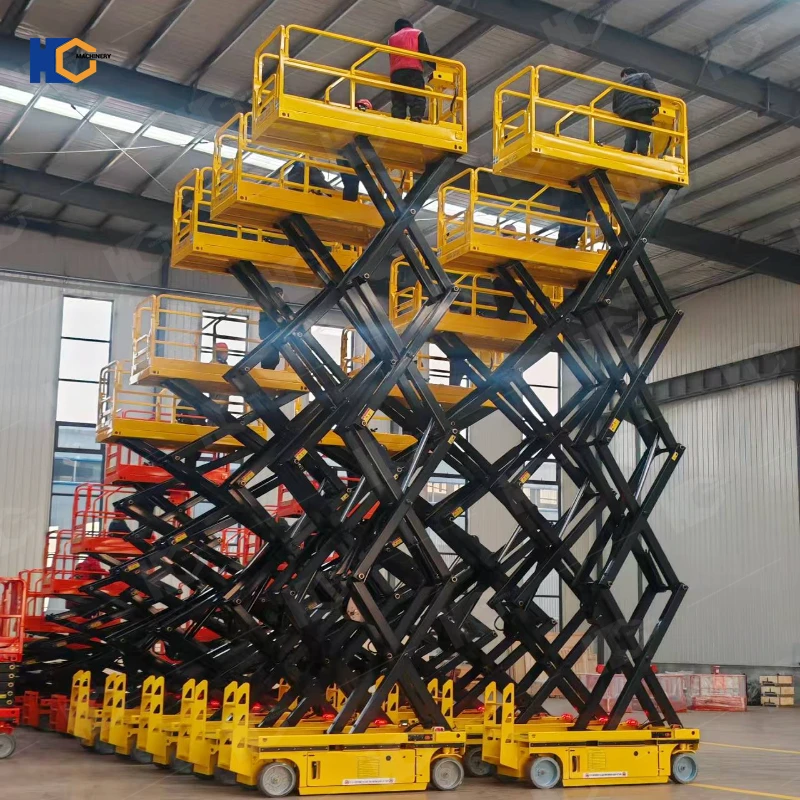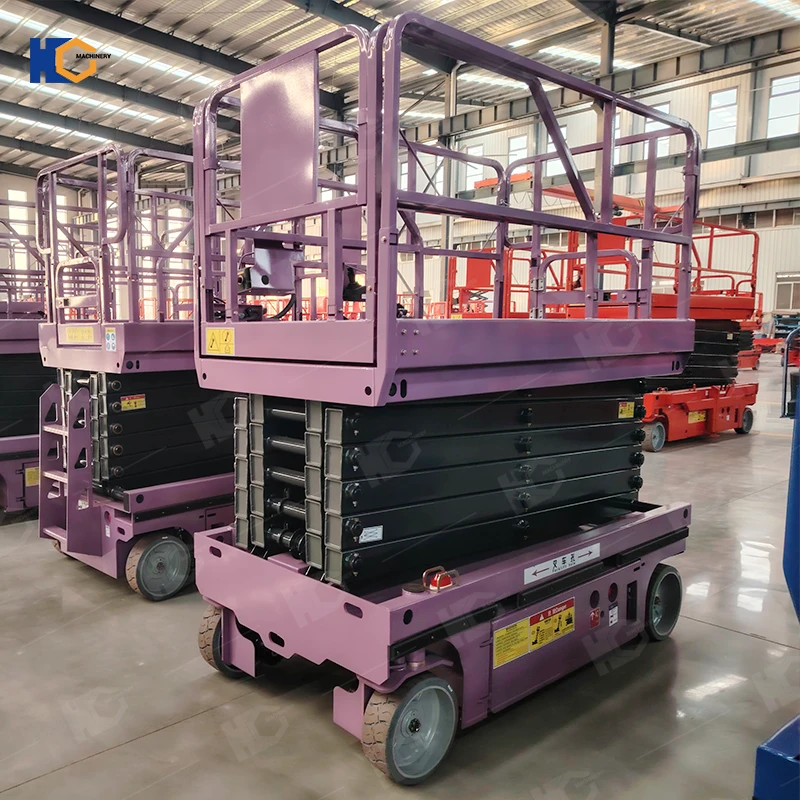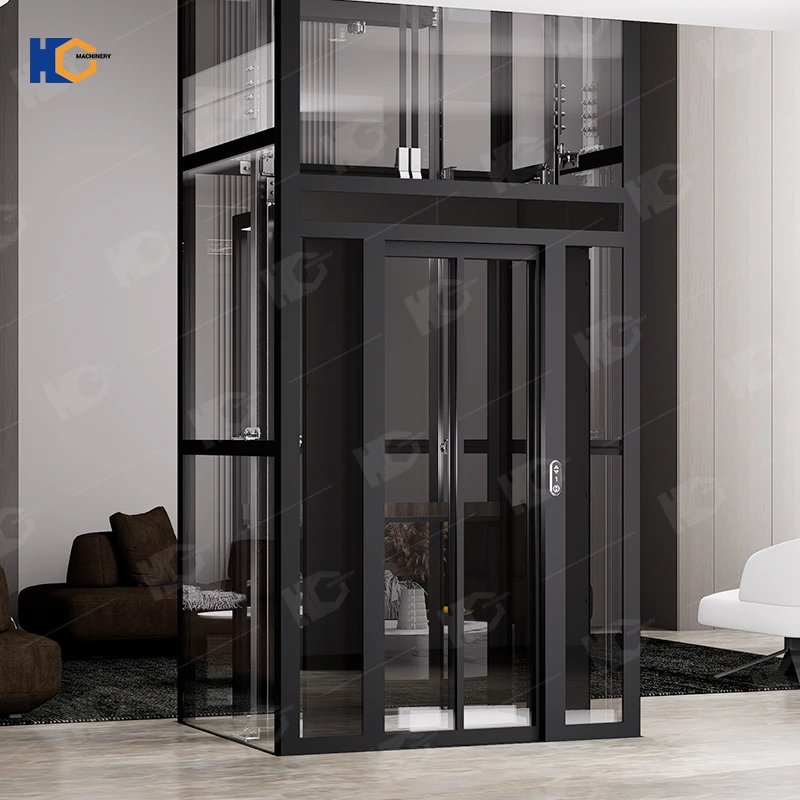Installing a commercial elevator is a major investment. Whether for an office building, a hotel, a hospital, or a retail center, knowing the various cost components in 2025 is essential for budgeting, planning, and avoiding unpleasant surprises. In this article, we’ll dive into what influences cost, typical price ranges, maintenance and operating costs, and tips for controlling expenses.
Table of Contents
What Defines a “Commercial Elevator”
Key Cost Drivers
Types of Commercial Elevators & Their Cost Ranges
Additional Cost Components: Installation, Permits, Retrofits
Operating, Maintenance, and Lifecycle Costs
Regional & Market Trends Affecting Costs in 2025
Sample Cost Scenarios
Tips for Budgeting & Reducing Costs
Return on Investment & Value Considerations
Conclusion
1. What Defines a “Commercial Elevator”
Before discussing cost, it’s important to understand what is meant by a “commercial elevator.” Generally:
Use case: Passenger transport, freight, service, or mixed use in a building where many people or heavy goods are moved.
Regulations and codes: Commercial elevators must comply with stricter safety & accessibility codes (e.g. ADA in the U.S., local building codes, fire codes).
Expected traffic and loads: Higher usage, heavier loads, more frequent stops, more durability required.
Performance demands: Speed, capacity, ride quality, redundancy, safety features—all these tend to be higher than in residential lifts.
Because of these, a commercial elevator costs much more than a typical residential lift, both in upfront hardware/installation and in maintenance/operating costs.

2. Key Cost Drivers
Several factors influence how much a commercial elevator will cost. Many are controllable, others less so. Here are the main ones:
| Factor | How It Impacts Cost |
|---|---|
| Type of elevator (hydraulic, traction, machine-room-less (MRL), etc.) | Different mechanical systems have different equipment, complexity, and efficiency. Higher performance or speed tends to cost more. |
| Capacity / Load / Car Size | Larger cars, higher weight rating need stronger structures, bigger motors, more safety features. |
| Travel height and number of landings (floors served) | More floors = longer shafts, more materials (cables, rails), taller hoistway, more labor. |
| Building structure & retrofitting needs | Existing buildings often need structural enhancements, electrical upgrades, foundation or shaft adjustments. New construction is typically cheaper per unit. |
| Machinery location (machine room vs machine-room-less) | Machine rooms require extra space, materials, and access. MRL designs can save space but often cost more in precise engineering. |
| Safety, accessibility & regulatory compliance | Fire-proofing, door interlocks, emergency power, compliance with safety & accessibility laws can add to cost. |
| Finish / Aesthetics / Custom Features | Upgraded finishes, cabin designs (glass, stainless steel, decorative panels), controls (touchless, voice, sensors) all increase cost. |
| Technology & energy efficiency | Gearless motors, regenerative drives, IoT monitoring, predictive maintenance tools cost more upfront but reduce operating cost. |
| Local labor, materials, and permit costs | Labor rates, material costs, shipping, and permit/regulation fees vary greatly by region/country. |
| Maintenance and lifetime durability | More durable components cost more at first but may save money long term. Manufacturer reputation, parts availability matter. |
3. Types of Commercial Elevators & Their Cost Ranges (2025 Estimates)
Here are common types of commercial elevators in 2025, together with typical cost ranges (both of the equipment and installed system) and where each makes sense.
| Elevator Type | Best for / Use Case | Typical Installed Cost Range* |
|---|---|---|
| Hydraulic Elevators | Low-rise buildings (up to 5-6 floors), freight service, when speed is not critical. | Approx. US$20,000 − US$50,000 for lower capacity, simpler systems. |
| Traction Elevators (geared or gearless) | Mid-rise to high-rise, passenger traffic, when speed & ride quality matter. | About US$30,000 − US$75,000+ depending on floors, capacity, finishes. |
| Machine-Room-Less (MRL) Elevators | Buildings where space is limited, wish to avoid a separate machine room, but still need higher performance. | Typically US$50,000 − US$100,000 or more for fully installed units. |
| Freight Elevators | To move heavy loads—warehouses, industrial, retail back-of-house. Usually more rugged, larger. | Can go well above standard passenger elevator costs, depending on load, height, durability. In many cases US$100,000+ installed. |
* These ranges are typical but not comprehensive. “Installed cost” includes the elevator unit plus construction, shaft, electrical, finishes, etc., unless otherwise noted.
Additionally, note estimates like US$50,000–US$100,000 per landing in some U.S. sources. A “landing” means each stop/floor. This helps approximate cost for multi-story installations.
4. Additional Cost Components: Installation, Permits, Retrofits
Beyond purchasing the elevator unit itself, many other costs must be included in any realistic budget.
Shaft construction & structural work
Building the vertical shaft or hoistway.
Foundation, pit work (if needed), reinforcement of existing structure.
Fire-proofing, shafts that meet code for safety (e.g. for smoke, fire exposure).
Electrical & mechanical setup
Power supply upgrades, wiring, motors, control panels.
Lighting, ventilation, door operators, car interior systems.
Permits, inspections, & regulatory compliance
Local building permits, elevator inspection fees.
Accessibility compliance (ramps, door widths, controls).
Safety systems: emergency stop, backup power, fire safety systems etc.
Labor & installation time
Labor costs vary by region; skilled technicians are required.
The complexity of retrofit vs new build can drastically affect time & cost.
Customization & finishes
Cabin finishes: stainless steel, glass walls, decorative panels, premium flooring, lighting.
Advanced controls and user interface: touchless buttons, voice, app integration.
Delivery, shipping, & logistics
Large components, motors, control panels often heavy & bulky.
Access to the building, crane or hoisting equipment etc.
All of these “other” costs can often add 20-50% or more to the base equipment cost, sometimes far more in difficult installations (especially retrofits in old buildings, or high-rise installations).
5. Operating, Maintenance, and Lifecycle Costs
An elevator is not a “buy once and forget.” Over its life, operating and maintenance costs often exceed initial purchase costs if not managed well.
Maintenance contracts: Monthly or annual service agreements for safety checks, lubrication, adjusting, replacing worn parts. In the U.S., typical business elevators may cost US$200-US$500 per month (or more) depending on usage, type, and complexity.
Energy and power consumption: Efficiency varies by type—hydraulic tends to be less efficient (especially in tall travel) than gearless traction or MRL with regenerative drives. In 2025 many new installs emphasize energy-saving technologies.
Repairs & parts replacement: Over time, doors, cables, hoist motor, control systems, sensors will degrade. Weather, usage, and environment matter.
Modernization and upgrades: As technology or code standards advance (e.g. safety, accessibility, IoT monitoring), older equipment may need retrofits or full modernization.
When budgeting, plan for a lifecycle horizon of 20-30 years typically (though many elevators can last longer if well maintained).
6. Regional & Market Trends Affecting Costs in 2025
Several macro trends in 2025 are influencing elevator costs:
Material costs & supply chain: Steel, motors, electronics, control systems have been impacted by global supply‐chain disruptions, inflation, shipping costs. These have raised component costs.
Labor costs: Skilled trades wages continue to rise, especially in major metropolitan areas or areas with shortages. Permitting and regulatory review times also add cost.
Energy efficiency & green building standards: LEED, net-zero, sustainability requirements often push for more efficient motors, regenerative braking, better lighting, sometimes solar power backup, etc. These may increase initial cost but reduce operating cost and may bring incentives or rebates.
Smart and connected systems: IoT sensors, predictive maintenance, remote monitoring are more common, sometimes required. These features add cost but can prevent downtime and save long-term maintenance costs.
Regulatory tightening: Stricter safety, accessibility, seismic codes in many regions mean more robust design, better materials, and possibly more inspection or certification cost.
7. Sample Cost Scenarios
To make things concrete, here are a few illustrative scenarios showing what a commercial elevator might cost under different conditions in 2025.
| Scenario | Building Type | Key Specs | Approx Installed Cost |
|---|---|---|---|
| Small retail building | 3 stories, low traffic, new construction | Hydraulic elevator, 2,500-3,000 lb capacity, basic finishes, 3 stops | ~$60,000-$90,000 |
| Mid-rise office building | 8-10 stories, moderate traffic | Gearless traction elevator, 4,000 lb capacity, glass-door finishes, advanced control panel, machine room-less | $200,000-$400,000 |
| Hotel / high-end commercial | 15+ stories, high usage, premium interiors | Multi-car system, speed, redundancy, premium cabin materials, advanced safety and monitoring | $500,000-$1,200,000+ |
| Freight / industrial facility | Low to medium height, heavy loads | Freight elevator, large platform size, rugged construction, higher capacity (tons), possibly a machine room | $150,000-$300,000+ depending on load & usage |
These are approximate and depend heavily on location (urban vs rural), accessibility, existing building condition etc.
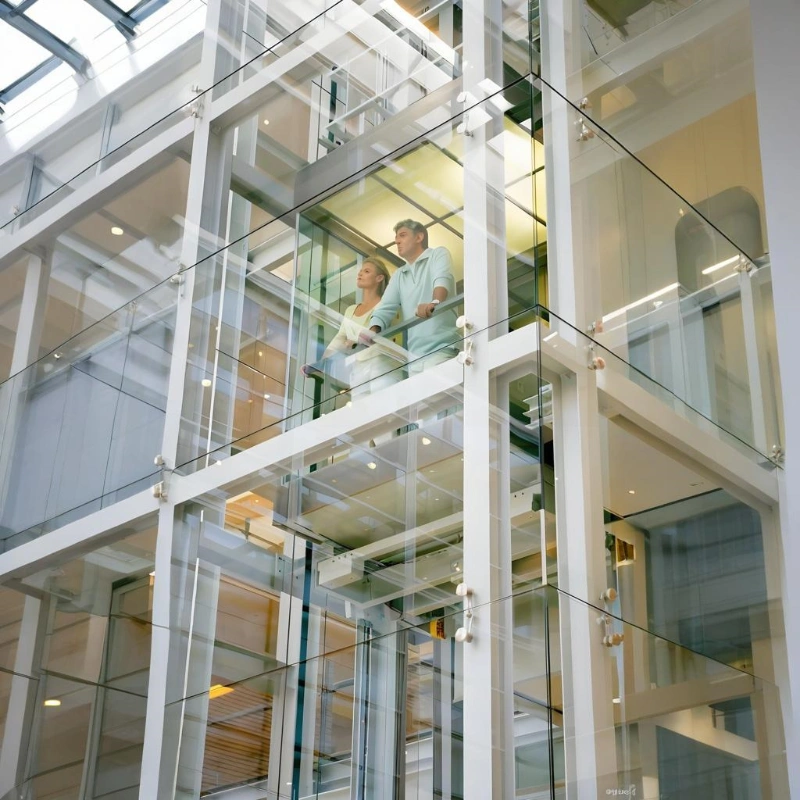
8. Tips for Budgeting & Reducing Costs
To keep a commercial elevator project from blowing past your budget, consider these strategies:
Early planning
If possible integrate elevator requirements into new construction rather than retrofitting.
Engage structural engineers early to assess shaft, foundation, load requirements.
Choose the right type for your use
Don’t over-specify. If you don’t need super fast speeds or large capacities, opting for simpler equipment can save significantly.
Select standard finishes
Premium custom materials are expensive. Simple, durable finishes may suffice for many commercial applications.
Use energy-efficient technology
Gearless traction, regenerative drives, LED lighting, smart controls—though they cost more initially, they can lower operating cost, possibly get incentives or rebates.
Get multiple quotes
Compare several experienced elevator suppliers/contractors. Consider warranty, maintenance contracts, parts availability, not just upfront cost.
Stage installation & plan for future expansion
If you anticipate more floors or traffic in future, plan for scalability early. For example, shaft heights, machine room space, structural load capacity.
Leverage incentives
In some jurisdictions there are tax credits, grants, rebates for energy efficiency, accessibility improvements, or “green” building features.
Regular maintenance to avoid big failures
Keeping up with maintenance prevents costly overhauls or emergency repairs.
9. Return on Investment & Value Considerations
While the upfront cost is high, there are ways commercial elevators deliver value:
Increased property value: Elevators often raise market value, especially in buildings where convenience, accessibility, or prestige matter.
Revenue generation: In hotels, malls, retail centers, ease of vertical transport improves customer experience; in freight settings, productivity gains.
Cost savings over time: Energy‐efficient systems, reduced repair downtime, lower labor as technology improves.
Compliance & legal liability: Meeting accessibility and safety codes avoids fines, delays, or worse—legal exposure.
When making the investment, calculate net present value (NPV) of the elevator over its expected lifetime (including maintenance, energy) to see whether the cost is justified.
10. Conclusion
In 2025, a commercial elevator is still a substantial investment. Typical installed costs usually start around US$50,000 to US$100,000 per landing, but frequently go much higher—especially for high-rise, freight, premium finishings, or in difficult installations. Retrofitting, customization, and regulatory compliance are major cost drivers.
However, careful planning, choosing appropriate technology for your building’s needs, leveraging energy-efficient features and standard finishes, and obtaining competitive bids can help you manage costs. When budgeted correctly, the long-term returns—in terms of safety, functionality, property value, efficiency—often make the investment worthwhile.
